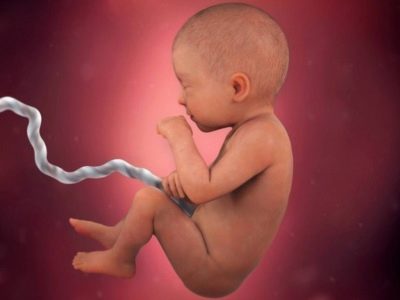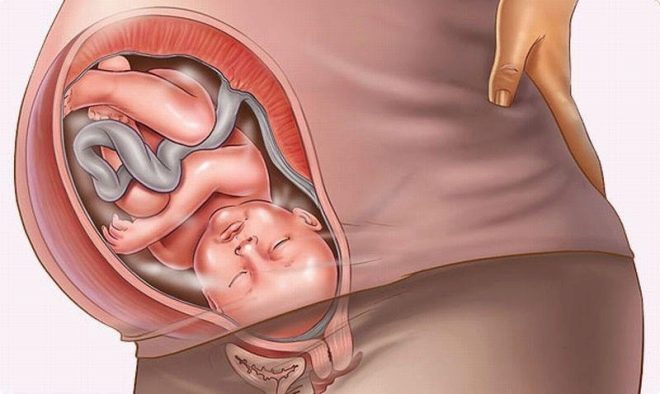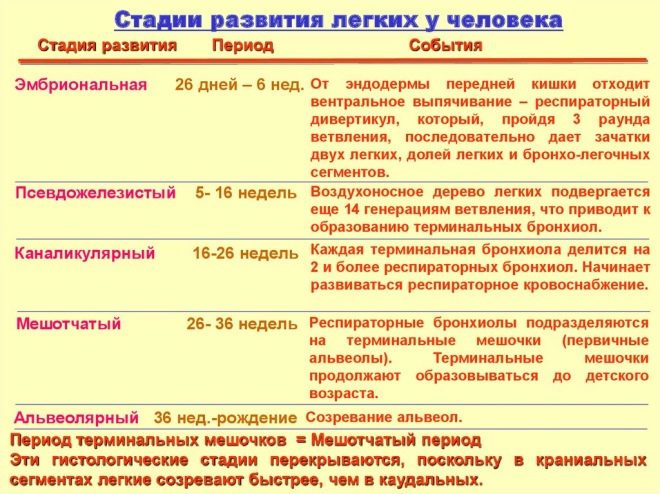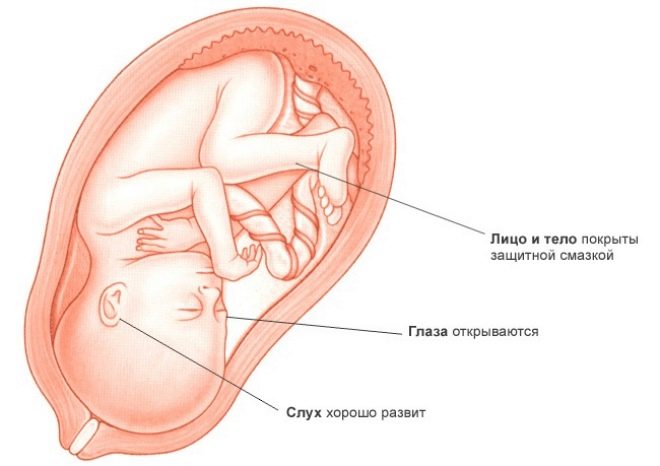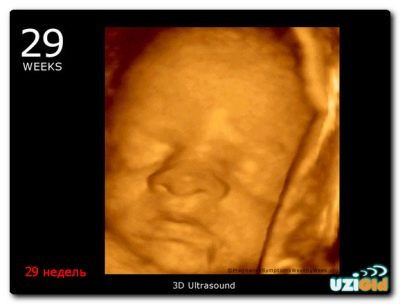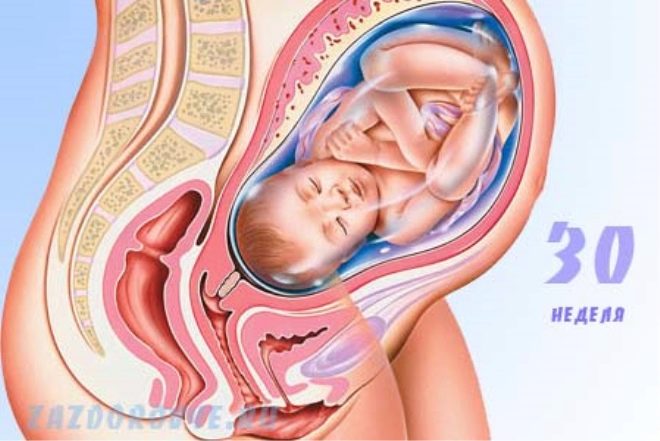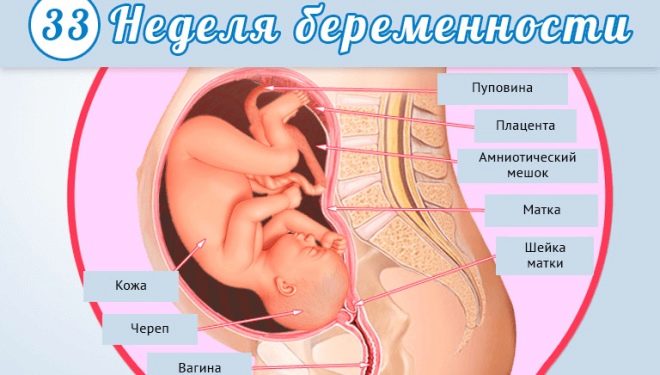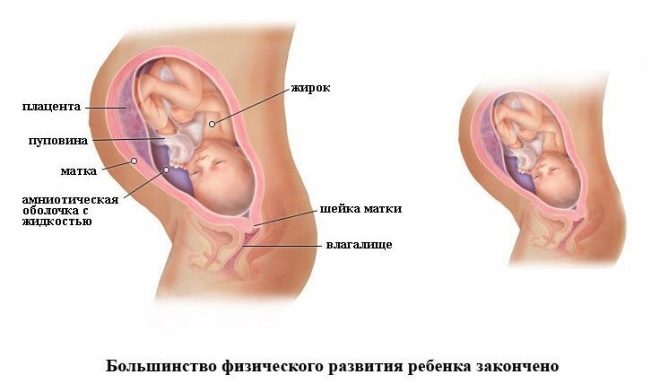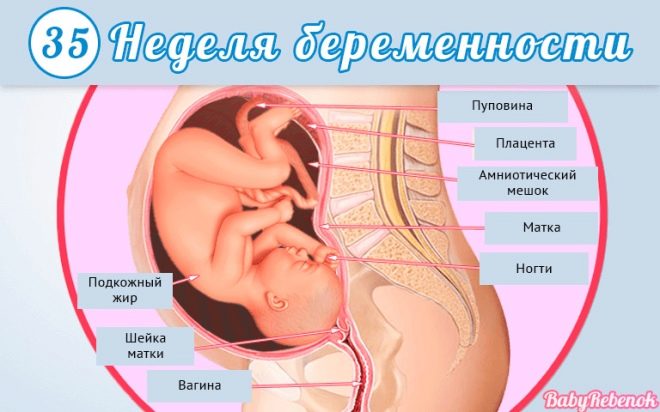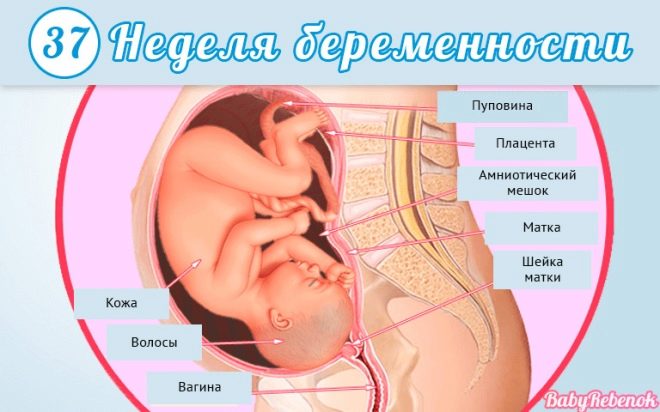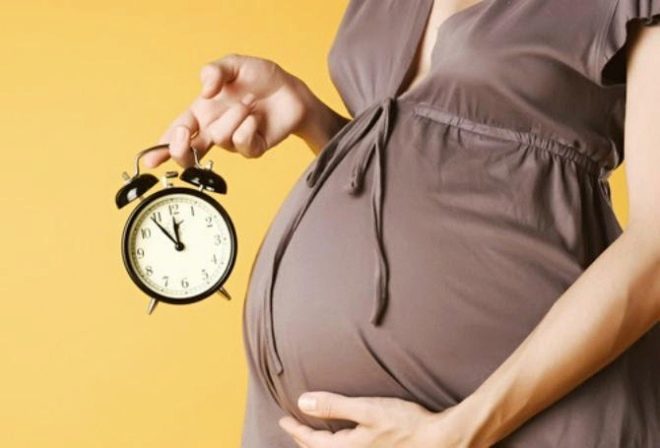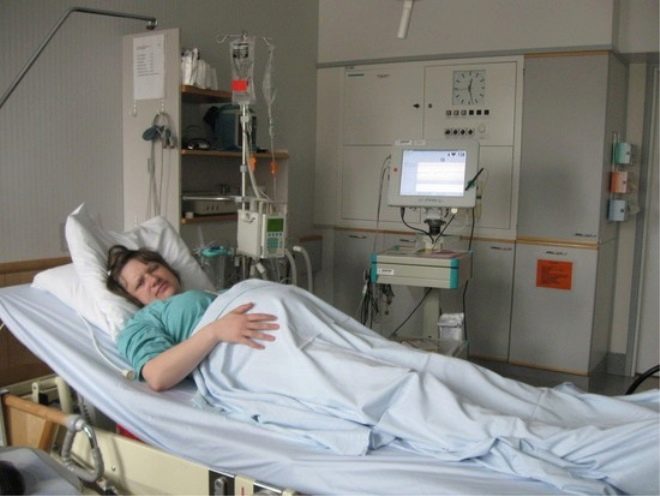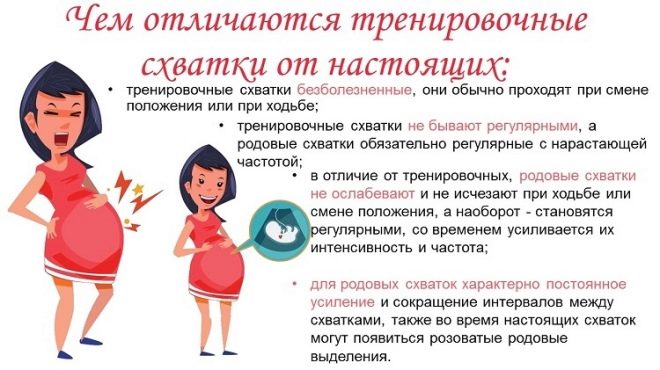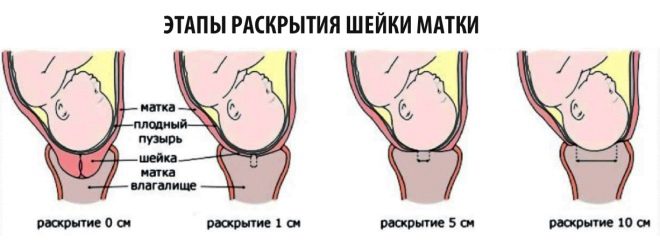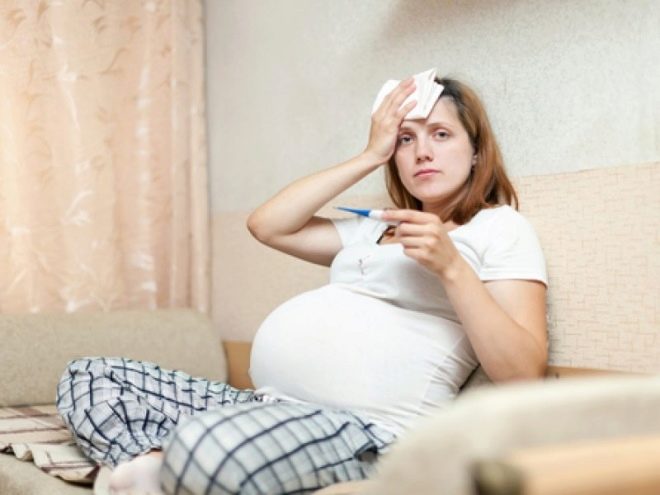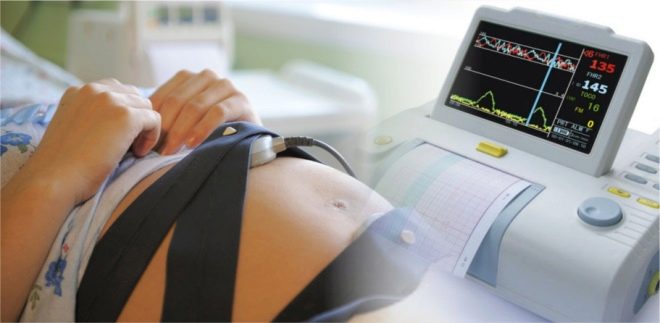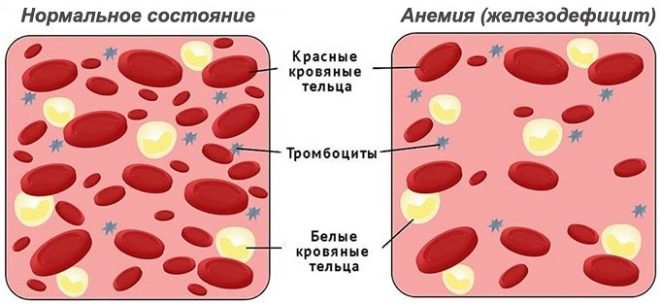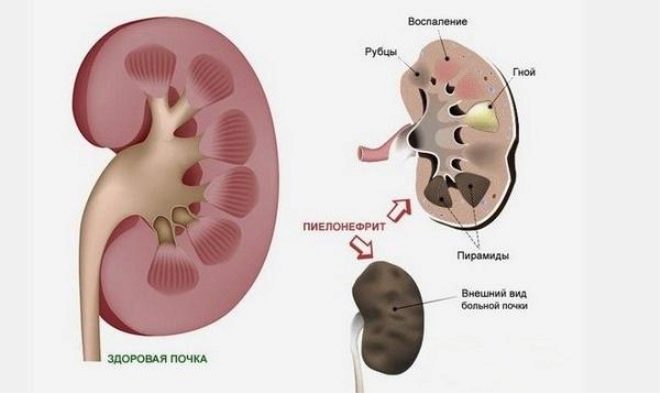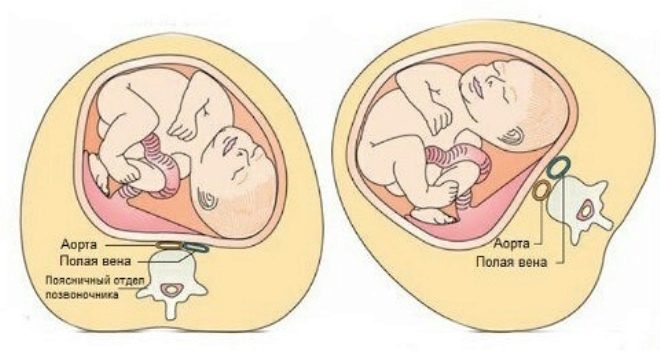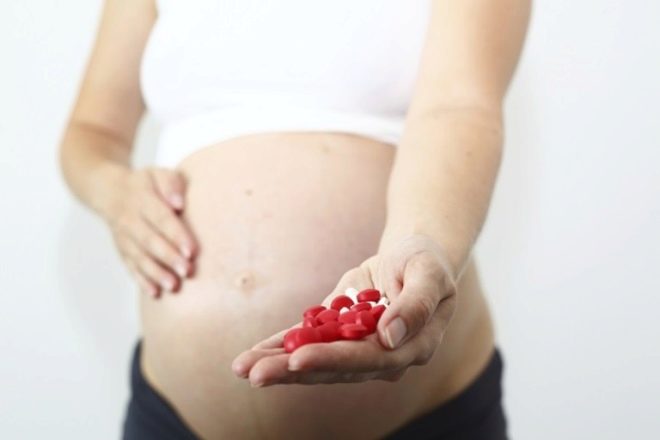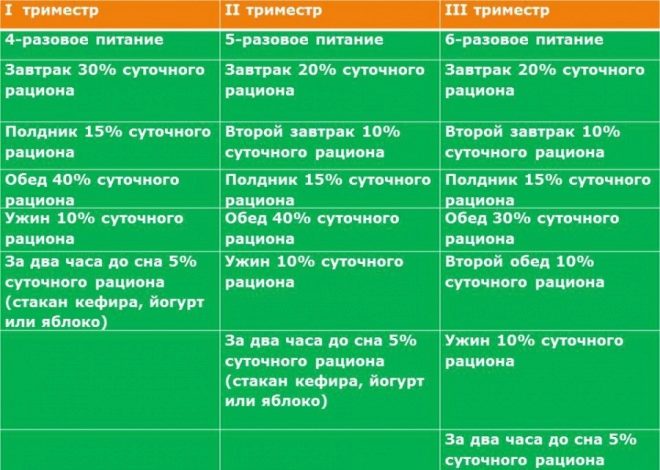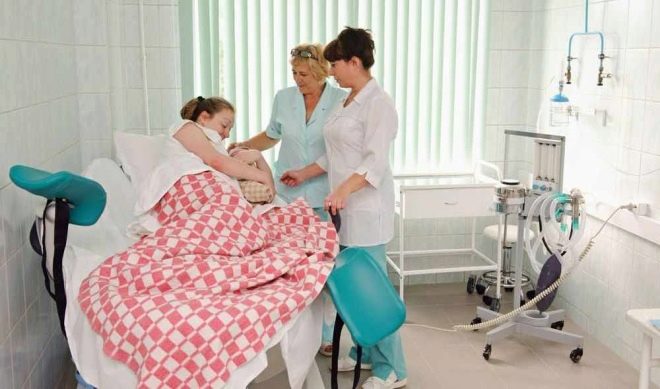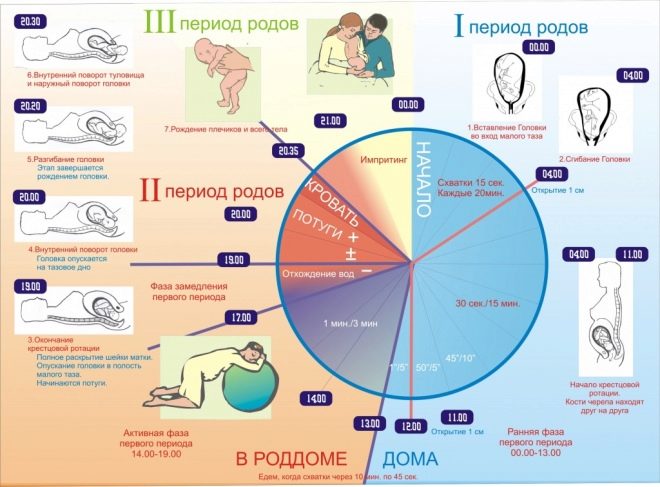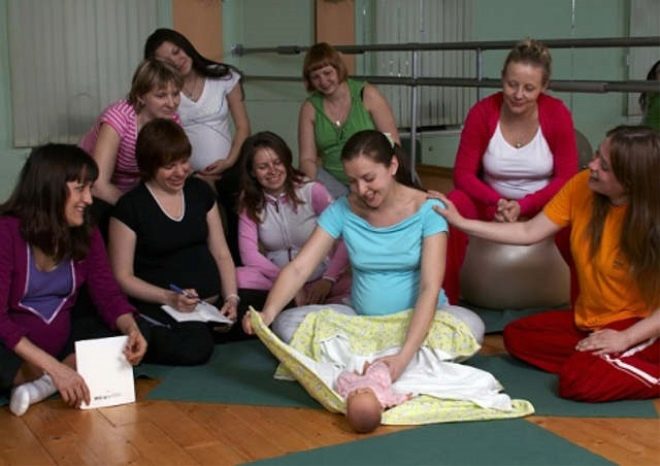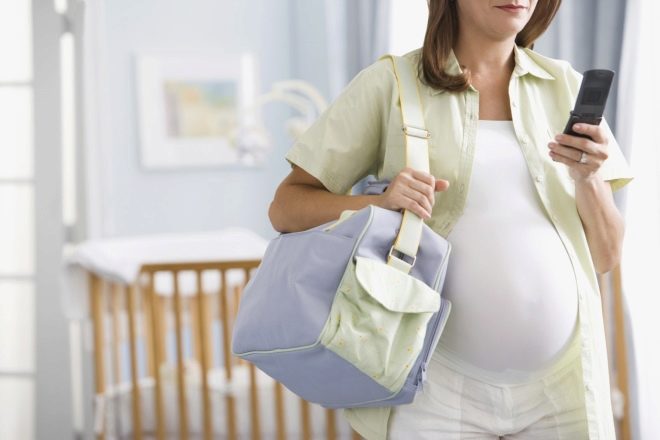Features of the third trimester of pregnancy
The third trimester - the final period of carrying a child. There is very little time left before the meeting of the mother with the baby. From the very beginning of the third trimester, women usually start counting down to delivery. And the closer to them, the more patience and courage is required from the future mother - this trimester is not at all as light as the previous one.
When does it begin and end?
The final trimester begins at 28 weeks gestation. But the exact timing of its termination is quite difficult to call: childbirth does not always occur on the day scheduled by the midwives. Estimated Delivery Day (DA) is used only as a guide. Most of the births fall at 39-40 week, a third of birth - at 38 week, about 15% of women continue to carry babies even after the DA has passed - up to 42 weeks of gestation. According to the existing medical standards, it is not considered postponed, it is called prolonged. When exactly you will have a birth - no doctor will answer.
The third trimester ends with the onset of regular labor. A woman ceases to be pregnant and goes into the category of women in labor, and after giving birth she becomes a puerperal and a new mother.
The third trimester includes the seventh, eighth and ninth calendar months of gestation period.
Fetal development
The baby is no longer as defenseless as before. In this trimester, he will not have anything new to form, except for neural connections and new skills. The last third of pregnancy is very important - the baby is learning to compensate for threats and adapt to new environments, because after birth it will meet with a new world, in which everything is not at all like in a comfortable and sterile maternal womb. It grows, matures the organs and systems of the child's body Now, adverse factors that could cripple or kill him at an earlier date, meet a decent immune response - the baby is less susceptible to their influence.
If suddenly the child is in adverse conditions of existence, his compensatory mechanisms help him survive and try to minimize the possible consequences. This is due to the fact that in the last three months, new malformations in children, as a rule, do not arise.
The baby has a strong effect on mother's body - it creates a lot of inconvenience and discomfort, but it helps her to prepare for childbirth - produces a small amount of oxytocin, which is necessary for uterine contractility in labor, presses the head on the cervix from the inside, promoting maturation and cervical dilatation. The aging placenta in recent weeks begins to protect the mother - she does not allow the child to gain even more weight to facilitate the birth process.
The critical stage in which preterm labor was extremely dangerous was left behind in the second trimester. Now, forecasts in the event of the birth of a baby ahead of time will be every week more and more positive.Up to 37 weeks, they will still be called premature, but From week 37, they will become urgent, and the baby will be considered fully mature and full-term.
During the entire trimester, the child will continue to gain weight - something more intense, then less, but the set will be inevitable. Compare: at the beginning of the trimester, the weight of the crumbs barely exceeds a kilogram, and by the 37-38 week significantly exceeds 3 kilograms. There are tots, the weight of which by the end of the trimester will exceed 4 kilograms.
During the entire last third of the gestation period, the baby will actively develop the formation of the brain, will hone the functions of the nervous system. This process will last and then, after childbirth. It is necessary to understand that the baby does not yet possess arbitrary skills, but is already ready to learn them, and he will deal with this literally from the first hours after birth.
In the final third of the pregnancy, the senses work - they will help the crumbs to adapt in the new world, because immediately with the first breath a huge amount of sounds, light, smells will fall on it, the ambient temperature will change, it will be applied to the puerperal breast, and he will begin to perceive new tastes. To analyze all this information, the brain must be well prepared.
The lung tissue continues to mature throughout the entire trimester - a phospholipid substance called “surfactant” continues to accumulate in the alveoli, thanks to which the child will be able to breathe independently after birth.
We offer interesting information about what is happening new in the baby for weeks of pregnancy.
28 week
This week opens for the baby a new stage of its intrauterine development - perinatal or late fetal. It means that your baby is fully formed, he has everything for independent survival, it remains only to ripen the organs, to increase in size. The child accumulates subcutaneous fat very actively, with differences in body weight in boys and girls. It is small - about 150 grams, but it already exists.
This week, the baby already has rather plump cheeks, one more part of his body, which touches his parents, begins to get better. The kid is actively getting rid of lanugo, and about a tenth of this thin hair from the skin has already fallen. Children in the womb at this time show a clear reaction to light.that gives reason to believe that the formation of the optic nerve is completed - if you light up your stomach, the baby starts to blink and turn away. Fear of childbirth this week is not worth it - up to 90% of babies survive.
29 week
The kid is busy sharpening reflexes. He already "knows" dozens of skills that will help him survive in a new world for himself. Swallows, spits, chest makes frequent breathing movements, the same that will make when the child goes to the pulmonary type of breathing. Weight gaining baby reaches record rates - up to 40 grams per day. In general, children grow up and "get fat" according to the genetic program, their parental DNA.
Survival if birth occurs, WHO estimates at 97%, the risk of disability is minimal.
30 week
The long-awaited maternity leave has come. At exactly 30 weeks, a woman carrying one child is given a sick leave for 140 days. If the mother has twins in her belly, then she goes on maternity leave at 28 weeks.
Baby was cramped in the womb. Most of the fruits already occupy the position that will remain until the birth. If now your baby is not in headache, then the probability of self-reversal, alas, is low. There is no space for such maneuvers in the womb.
The average weight of the fetus on this period is about one and a half kilograms with growth of more than 40 centimeters.. A coloring pigment appears and the hair becomes darker. Light, they remain only for those who are destined to be born blond.
31 weeks
The skin was red and wrinkled.From this week she becomes a delicate pink, wrinkles smoothed out. In just a week, the baby adds about 300 grams due to the growth of a layer of subcutaneous fat. The auricles, which protruded to the sides, begin to adhere to the head. If the baby is now born, according to the degree of cure of the cartilage tissue of the ears of the doctor will judge the degree of its prematurity.
32 week
From this week, the motor activity of the fetus is declining. Stirring will be more rare and more painful for momSince there is no space left in the uterus - up to 90% of the space is occupied by the baby, 5% is allocated to the placenta, the rest is fetal membranes and amniotic fluid. The amount of water is also starting to decrease. The weight of the baby on average from one and a half to two kilograms.
The placenta begins to produce hormones that are important for the preparation of the female body for childbirth.
33 week
Many on this period are the final third ultrasound, but they are disappointed - to look at the baby in full growth is no longer possible. The baby has grown so much that the ultrasound sensor cannot get its full image, the child is examined in parts - the head and face, legs, pens, stomach and chest.
The genitals can be safely hidden behind the umbilical cord or the hip of the child, since he has long been in a bent position - he will no longer fit in another womb.
34 week
The uterus reaches its maximum stretch. The placenta begins to age and artificially restrain further fetal growth.. This does not mean that the baby will no longer gain weight, but simply the pace of the set will slow down somewhat. Most fruits weigh over 2.3 kilograms, and this gives reason to believe that a baby born on such a period will be enough to stay in a special heated bed, more serious resuscitation measures may no longer be required.
As the placenta ages, the baby begins to use compensatory mechanisms and adaptation mechanisms, because now both oxygen and nutrition may come in less.
35 week
For the first time in the entire term of carrying the baby starts to look like a newborn. But this should not be misleading. It looks ready for birth only externally, the ripening process of the kidneys and lung tissue continues inside, the load on the right and left heart sections due to aging of the placenta is changing. It will be better if the baby stays in the womb for a few more weeks.. The ongoing processes are very important to him.
Lanugo and cheese-like lubricant have almost disappeared, the skin has a delicate pink color, not only cheeks and butt, but also the extremities of the fetus look plump. The iris of the eye acquires in this period the color that the child is supposed to have according to the genetic program.
Nerve endings myelinated. The mass of the brain has increased significantly, the convolutions and grooves on it deepened.
36 week
For this period, for the first time babies can reach a weight of 3 kilograms or so with an average height of 47-49 centimeters. Pregnant women for the first time this week most often occurs abdominal prolapse. - the baby sinks into the lower part of the uterus and begins to press the head against the internal pharynx, promoting the maturation of the cervix. The kid is grouped and puts his hands on his chest, he is actually in the pose of the runner at the start.
The nail plates are growing up and on this period for the first time go beyond the limits of the phalanges of the fingers. The bones are sufficiently cured, while only the cranial bones remain mobile and relatively soft. Deliveries this week, although they are premature, are not dangerous for either mother or fetus.
37 week
The weight of the baby has passed for 3 kilograms. Starting this week, births can be expected any day, and they will be urgent, that is, occurring on time. Surfactant in the lung tissue has accumulated enough, the intensity of its production is reduced. The baby's movements slow down, he feels cramped.
38 week
This is a week of waiting. Women carefully listen to the changes in their bodies, looking for signs, precursors to early delivery. The kid also subsides somewhat. Because of the crampedness, he spends most of his time in a dream.
In male fetuses, the testicles descended into the scrotum. Only about 2% of children can not yet boast the correct location of the sex glands, but they still have time.
39 week
All the organs and systems of the child are ready for birth. Intensive processes continue only in one - in the nervous. Young neurons continue to form, which build more and more neural connections.
Prevention of the fetus at this time final, not appealable. Therefore, a cesarean section is performed in transverse or pelvic at 39 full weeks to reduce the chance of birth injuries.
40 week
If women think that they are tired at the 40th week and are nervous, they are mistaken, because they simply do not know that the child is experiencing much more in this period. The tightness in the womb causes him great stress, the fetus begins to produce adrenaline, the stress hormone. He begins to accelerate the formation of a generic dominant in the mother's body. The child thus hurries the maternal organism.
If a woman goes into 41 and 42 weeks, she should know that every day the situation for the child becomes increasingly stressful, the degenerating placenta can no longer provide him with normal nutrition and oxygen supply, but you should not worry about the baby - his body can already compensate some trouble.
If childbirth does not begin until 42 weeks, then doctors, according to the order of the Ministry of Health, will take measures to induce labor, that is, stimulate childbirth to prevent true perenashivaniya - a condition in which the baby can no longer compensate for the lack of oxygen and nutrition.
Woman's well-being
The condition of the woman worsens in process of increase in term. If the beginning of the third trimester is accompanied by a little discomfort, then by the end of the period, even very mature women begin to dream that the birth has already occurred as soon as possible. You can understand them: walking, doing daily activities is becoming more difficult every day. Woman pulls up to lowering the abdomen heartburn - The uterus presses on the stomach and leads to the reflux of gastric juice into the esophagus, constipation and diarrhea - a consequence of pressure on the intestinal loops, shortness of breath and pain in the ribs - a consequence of squeezing the diaphragm.
As soon as the stomach sinks lower, it becomes easier to breathe, the costal arches hurt less, but toilet trips are becoming more frequent - now the pressure of the baby’s head is felt not only by the cervix, but also by the bladder. The tailbone and the pubic bone begin to hurt more and the pelvic bones soften intensively before childbirth.
The nasal congestion that was present in the first trimester and was caused by the action of progesterone on the mucous membranes may return. If the physiological rhinitis of pregnant women returns, it usually persists until the very birth and passes after the baby is born., and the hormonal background of the woman will come to its original state.
Headache at this time may be caused by high or low pressure, may be due to sleep disturbance, which is also common in the last weeks of gestation, may be psychogenic - the woman is experiencing, nervous, worried about the outcome of childbirth.
Among other pains, there are completely normal for this period pains in the knees and feet (caused by an increased body weight of the woman), back pain due to a displaced center of gravity (the stomach and chest are already very large). There are complaints about shooting in the pelvis - this is a consequence of pinching nerve endings, that the navel hurts - the skin tension is now maximum.
Training fights as the date of birth approaches, intensifies, occurs more often. They manifest short stresses of the uterus, followed by relaxation of muscles. They are not systematic, appear and disappear completely spontaneously. If not, this is also the norm.and worry about it is not worth it.
Discharges in the last third of the term for carrying a baby require particularly careful attention.. Their character as they approach to the genera changes: the discharge becomes more abundant. This requires enhanced hygiene measures. Watery liquid discharge, which increases when rising from a prone position, may indicate leakage of amniotic fluid, and mucous jelly discharge with blood or blood streaks is a mucus plug that leaves its place in the cervical cervical canal shortly before the onset of labor.
Normal can be considered a selection of bright and odorless, homogeneous in consistency.
Any deviations in color, quantity, smell and character of discharge, especially if this is accompanied by discomfort, pain, should be a reason for immediate treatment to the doctor.
The psychological condition of a pregnant woman in the third trimester deserves special attention. Most are afraid of childbirth. It is important to know that this fear has a huge impact on the preparation of the cervix for childbirth and the course of labor. In a state of fear, a woman produces a large amount of stress hormones that cause clamps on a muscular level.This causes weak dilatation of the cervix, lack of disclosure, tearing, and birth trauma.
In the third trimester, it is important to get the right psychological assistance and support aimed at reducing stress; the right positive attitude largely determines the nature of the upcoming delivery.
The level of progesterone begins to decrease, the level of estrogen, oxytocin, adrenaline increases. The uterus occupies almost the entire space of the abdominal cavity. Closer to the birth in it the number of nerve fibers begins to decrease - this is also the mechanism of natural anesthesia of childbirth, thought out to the smallest detail by nature itself. The cervix matures, shortens, softens. Her condition is assessed after 38 weeks gestation.
The mammary glands increase even more. An aging placenta begins to produce the hormone prolactin, which actively prepares the breast of a woman for the upcoming breastfeeding. Nipples become rougher, colostrum is released. If it is not, do not think that there will be problems with the appearance of breast milk. - these facts are not related to each other. After 36 weeks, colostrum becomes thinner and brightens.
Women who suffer from anemia in the second trimester, by the middle of the third begin to feel much better - hemoglobin is growing. More actively grow hair and nails, because their increased growth is a manifestation of the influence of estrogen.
Immunity of a woman is at the limit, and therefore it is now that allergic reactions, catarrhal diseases often start, chronic diseases are exacerbated. Increases sweating.
Possible complications
The most dangerous complications of the third trimester are states that, in one way or another, affect the state of the child’s brain, it is during this period that various changes occur, and the negative effect of pathologies can affect the functioning of the fetal CNS. ABOUTpassive preeclampsia with external and especially internal edema, dangerous water flow, dangerous fetal hypoxia, because first of all, it is the children's brain that is especially acutely short of oxygen.
No less intrauterine infection is dangerous, which can be possible due to the violation of the integrity of the fetal bladder, and due to early discharge of the mucus plug, especially if a woman has untreated infections of the genital tract, even a banal and common thrush.
The task of doctors and future mothers in the last weeks is to monitor the condition of the fetus vigilantly. When circumstances of prenatal suffering are detected, the decision about early delivery is often made, if it is not possible to establish or eliminate the impact factor.
We list the most common pathologies and complications of the third trimester.
Anemia
Associated with the increased needs of the child and the placenta in the gland, as well as with an increase in blood volume (in this case the plasma volume increases by almost 40%, that is, the blood becomes more diluted). A violation indicates a decrease in hemoglobin of less than 100 g / l, the number of erythrocytes decreases, the hematocrit value decreases.
Anemia in the third trimester threatens with multiple pregnancies, with pregnancies that occur too early after the previous one (two years have passed), with insufficient nutrition and the presence of a chronic infection in the pregnant woman. It is manifested by pallor, the woman wants to sleep all the time, there are signs of low pressure, the woman is more susceptible to colds and viral diseases.
A woman is recommended a diet rich in iron, as well as medicines - vitamin C, iron preparations ("Sorbifer" and others).
Gestational pyelonephritis
The inflammatory process in the tissues of the kidneys occurs due to the compression of the uterus by the uterus, if this violates the flow of urine. If there are pathogenic microflora in the female genital tract, the probability of complication is very high. Bacteria multiply rapidly and infect the renal calyx and pelvis.
Manifested by chills, fever above 37.0 degrees, signs of intoxication, back pain, difficulty urinating. Urinalysis shows a high level of leukocytes. The kidneys of a woman cope worse with their filtration tasks. The condition is dangerously high in the development of severe preeclampsia.
For the treatment prescribed antibiotics, diuretic drugs.
Aorto caval compression
By such a complex medical term is meant the compression of the lower genital vein and the lower part of the aorta by a large and heavy uterus, if the woman lies on her back. All pregnant women have heard that it is dangerous, but not everyone knows what it is. When squeezing, the venous return to the heart is disturbed, it starts to beat less often, collapse occurs. The blood pressure in the vessels decreases to critical marks, the skin turns pale, a bluish tint appears.
This can happen during the third trimester, and even during the birth itself. The result is usually quite deplorable: the placenta exfoliates prematurely, the blood flow is disturbed, the baby experiences acute uncompensated hypoxia, and often the fetus dies. Now you know why it is especially dangerous to lie on your back in the last weeks of pregnancy.
Surveys, analyzes
In the middle of the third trimester of pregnancy, a woman will do a control ultrasound with color doppler - this method, which some people call the third screening, will evaluate the work of the placenta, as well as give an idea of how well the baby is provided with oxygen and blood, how well he feels.
Since 30 weeks in consultation do CTG - cardiotocographic research allows to obtain data on the baby's heartbeat and his motor activity, as well as on the development of his autonomic nervous system.
A woman will now come to the doctor’s appointment once a week. Every time she will have to pass urine for a general analysis so that the doctor can see in the dynamics whether the work of the future mother’s kidneys is normal, whether there are signs of pyelonephritis and preeclampsia. Each technique will be weighed, assessed for the presence or absence of edema, blood pressure measurement on two hands.
A woman before childbirth has to pass almost all the same tests that she gave during registration - blood for syphilis and HIV-affiliation, to make a coagulogram with the definition of fibrinogen and D-dimer.
According to the testimony, hormone hormone hormone assays will be made, and hemoglobin and ESR will be evaluated as part of a general blood test.
Common Questions
Questions in women in the third trimester, according to reviews, are quite similar, we have united them in groups.
Antibiotics
Antibacterial drugs that could significantly harm in the first trimester and posed a certain danger in the second, are now not so contraindicated. If necessary, the doctor may well prescribe such treatment to the woman, because a bacterial infection for a baby in late pregnancy is more dangerous than the use of antibiotic therapy.
There are almost no restrictions on topical administration - nasal drops, antibiotic ointment, eye drops for certain pathologies, wounds and burns may well be applied.. For systemic use, there must always be compelling circumstances - the presence of an infection, the harm from which will be higher than the potential harm from the use of antibacterial drugs. Antibiotics can no longer cause the child in the third trimester of malformations.
It is recommended to avoid drugs from the group of quinolones, as well as ototoxic drugs (Gentamicin, Neomycin), since they can lead to impairment of the child’s hearing.
Insomnia
Insomnia in late periods it is caused by the inconvenience of sleep, because it becomes more and more difficult to roll over from side to side, pressure of the uterus on the bladder and frequent urging to the toilet, as well as anxiety, anxiety and fears of the future mother. Mother’s insomnia is not a big danger for a baby, but for the very future mom, a long insomnia can be dangerous - increases the likelihood of developing gestosis, increases the risk of developing anxiety syndrome and depression, increases the likelihood of cardiovascular diseases.
Pregnant women suffering from insomnia, quickly gaining excess weight, suffer from metabolic disorders.
All effective hypnotic drugs (on the basis of benzodiazepines, barbiturates, thalidomide, bromine-containing and others) are forbidden in the period of carrying a baby.
In consultation with the doctor, only vegetable sedatives can be recommended to the woman, which will help calm down and fall asleep better - motherwort, valerian, and so on. But with regard to such means, many doctors are strongly opposed.
To improve sleep, which is very important in the run-up to labor, a woman should:
- fall asleep in a ventilated room, on a comfortable mattress, use special pillows for pregnant women, allowing you to support the abdomen and back;
- to maintain a good mood, a positive attitude before childbirth, to perceive all the difficulties of the period as temporary, which will necessarily end in a happy meeting with the baby;
- walk in the fresh air, especially before bedtime;
- sleep less during the day, make your regime saturated, move, do current affairs.
Sleep better in complete darkness and silence. If this is not possible, be sure to buy earplugs and dark blackout curtains.
Sex
Do not think that sex for women with a big belly does not exist. Many, on the contrary, despite the physiological malaise, experience increased sexual desire. If there are no contraindications and complications of pregnancy, intimate life in the third trimester is not prohibited, but very specific restrictions are imposed on it.. The poses chosen by partners must completely eliminate pressure on the abdomen and uterus, and therefore the missionary position is excluded. Deep penetration postures (“rider”, for example) should also be excluded. Optimal for both sleep and sex posture lying on its side.
A woman needs to stop intimate contacts in case of the beginning of a discharge of a mucous plug or its complete release. - the cervical canal from this moment becomes open, the uterus from the vagina is no longer separated by reliable protection, it is possible that pathogenic organisms that can cause intrauterine infection can get into the uterine cavity. For the same reason, it is recommended to stop sexual intercourse in case of leakage of amniotic fluid.
Late sex also has a pronounced therapeutic effect: sperm contains natural prostaglandins, which allow the cervix to mature, soften and shorten.
The pleasure of intimacy with the husband raises the mood of the woman, and now positive emotions are exactly what she needs.
The ability to fly a plane
Air travel in the final third of the term of carrying a baby is not prohibited, but not recommended. Pressure drops, change of time and climate zones may not in the best way affect the well-being of a pregnant woman. Some airlines require a certificate from a doctor when boarding an aircraft. After 36 weeks landing may be denied. Before you fly somewhere, if you really need, check with the airline representatives about their rules for transporting pregnant women.
Can I treat my teeth?
Toothache in the third trimester is not uncommon. Calcium reserves in the woman’s body are greatly depleted, while the baby took this substance to harden its own skeletal bones, and therefore little teeth problems that were at the beginning of pregnancy but were not cured due to toxicosis, nausea, fear of anesthesia can now have more global scope.
You can treat your teeth. But experts do not recommend doing it right now.
If the problem does not require an immediate solution (no acute pain, flux), then the treatment is better to be postponed for the postpartum period, because the extra stress is now nothing for the expectant mother.
If the problem is acute, do not need to endure the pain - you should contact your dentist and solve it without fear for the condition of the fetus. Modern painkillers used in dentistry do not have a pronounced negative effect on such a large fetus as your baby is in the third trimester of pregnancy.
Recommendations
It is easier to survive the final trimester of pregnancy will help some useful recommendations made by experts, taking into account the characteristics of this gestational period.
Nutrition and Vitamins
A woman's diet in the final trimester is very important for her and the baby. The child needs nutrients no less, and sometimes even more than in previous periods, but it is better to refuse multivitamins in the last month of pregnancyso that the child does not "sifted" weight. Of course, every baby in the womb has its own potential for height and weight, and if, by the beginning of the trimester, doctors say that a large child is not born, you should not “feed” it with shock doses of vitamins.
If there is a shortage of a specific vitamin or mineral, which can be shown by a biochemical blood test, a woman may be prescribed a vitamin monotherapy, for example, an iron preparation for anemia or an oil solution of tocopherol with a deficiency of vitamin E. There will be no need for a complex vitamin accompaniment. If the baby, on the contrary, is small and grows slowly, the vitamins are shown and needed.
In the last weeks of pregnancy it is undesirable to include a large amount of dairy products, cottage cheese in the menu. It is better to eliminate these products, so as not to lead to excessive mineralization of the bones of the baby's skull - this will significantly complicate the process of the birth of the crumbs.
It is not necessary to use a large amount of animal protein. Try to eat more fiber-rich vegetables to eliminate constipation and fruit. (with a low allergenicity), it is better to replace a piece of beef with a lighter dietary chicken breast or boiled low-fat fish.
Alcoholic drinks, soda, coffee, everything smoked, roasted and spicy are still not recommended. Do not eat factory sweets. If the weight gain is over the norm, you can arrange fasting days, but this can be done only in consultation with your doctor.
Physical activity charging
A woman should not greatly reduce her physical activity, although a certain decrease is inevitable. As the abdomen grows, the future mother becomes more and more clumsy, she gets tired faster, needs rest. This does not mean that it is best to spend the third trimester on the couch.
A moderate and adequate exercise will help a woman prepare for childbirth - yoga, outdoor exercise, home exercises based on exercises for training the muscles of the pelvic floor, and exercises for the muscles of the back, legs and arms, including a combination of breathing exercises will benefit. with classes on such a projectile as fitball.
A woman can perform a certain range of duties around the house, but, of course, sharp squats, jumps, falls, intense running, and lifting weights are contraindicated to her. With this in mind, you need to plan your day.
Movement allows you not to gain extra pounds, accelerates the process of maturation of the cervix, improves the elasticity of muscle tissue.
Diseases, colds, SARS
Given that a woman’s immunity is reduced, getting sick for her now is not such an impossible situation. What to do, the question is complicated. For the child, neither the flu, nor the SARS, nor even the banal cold, present a great immediate danger, neither herpes on the lip, nor laryngitis are dangerous. But dangerous heatwhich accompanies most acute respiratory viral infections. It can cause disturbances in the uteroplacental blood flow, leading to placental insufficiency.
It is important to consult a doctor about which antipyretic drugs are right for you in case of illness. All funds based paracetamol Do not harm the baby, the doctor will tell you the specific.
Antivirals for pregnant women are not needed. This is an extra burden on the liver., besides, effective antiviral drugs do not exist, most of them are commercially viable pharmaceutical industry "dummy".
If the disease has overtaken in the last weeks of pregnancy, do not worry. Call the therapist at home, take a febrifuge, if the fever is high, provide yourself with a few days of rest in a lying state, drink more warm liquid - compote from dried fruits, green tea, homemade fruit juice, rosemary decoction. After 3-5 days the virus will be defeated by your own body.
If childbirth begins before the woman is cured, then in the maternity hospital, of course, she will be accepted, but placed in the observational ward, where all the patients get, with infections and unexplored women. The prospect, though unpleasant, is not fatal - and there women give birth very well and leave home on time.
Useful tips
During the entire third trimester of pregnancy, a woman should carefully read each day the fetal movement. Normally, they should be at least 10 in 12 hours (baby hiccups do not count). If the amount of stirring is insufficient, it can speak of severe hypoxia, which the baby can no longer compensate for. Increased movement usually indicates a problem at the initial stage, when compensatory mechanisms are still coping with the situation.
Here are a few tips that will help you more responsibly to the last weeks.
- Listen carefully to changes in your body.: nature of discharge, sensations, unpleasant symptoms must be noted by the expectant mother daily. If necessary, you must report changes to the doctor.
- Expand your horizons: Try to find out more reliable information about how your reproductive system works, how your childbirth will go, what are their stages. This will give more confidence in their abilities, as well as reduce anxiety about the occurrence of certain symptoms.
- Attend classes for pregnant women in the antenatal clinic or sign up for such courses in any clinic that you like - they will help you to learn proper breathing during different periods of labor, massage and self-massage techniques to facilitate labor contractions. At these classes, they tell how to take care of the baby in the first days, how to establish breastfeeding.
- With full responsibility, approach the choice of a maternity hospital or perinatal center.: read reviews, visit this maternity hospital, talk with staff, patients, find out what conditions the hospital has, what rules it has, and whether it has everything you need to provide resuscitation care to any mother and child. After making a choice, visit the head physician's admission day and sign the exchange card - the birth certificate gives any woman the right to choose absolutely any hospital or perinatal center for free.
- Make sure that you have collected everything you need at the hospital beforehand. (the list can be obtained at the chosen obstetric institution). Starting from 33-34 weeks, the collected bag and documents should be in a prepared state - if the birth starts, you will not have to worry.
- Even if the third trimester is clearly delayed, Do not resort to folk remedies and medicines to stimulate childbirth yourself. Induction of labor at 42 weeks and later should be carried out exclusively in the hospital. Until 42 weeks, nothing needs to be stimulated, especially at home - the consequences can be tragic.
Learn more about the third trimester of pregnancy in the following video.


